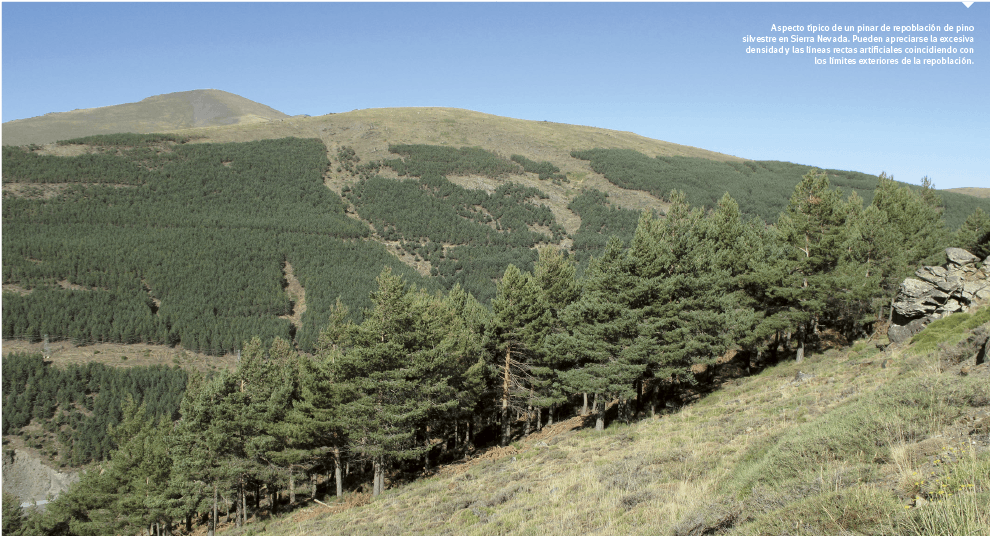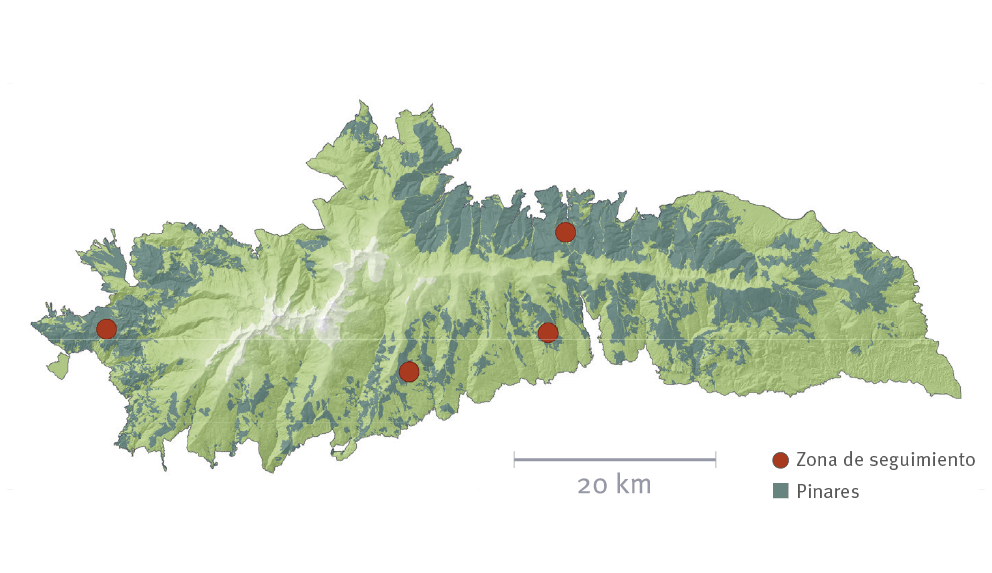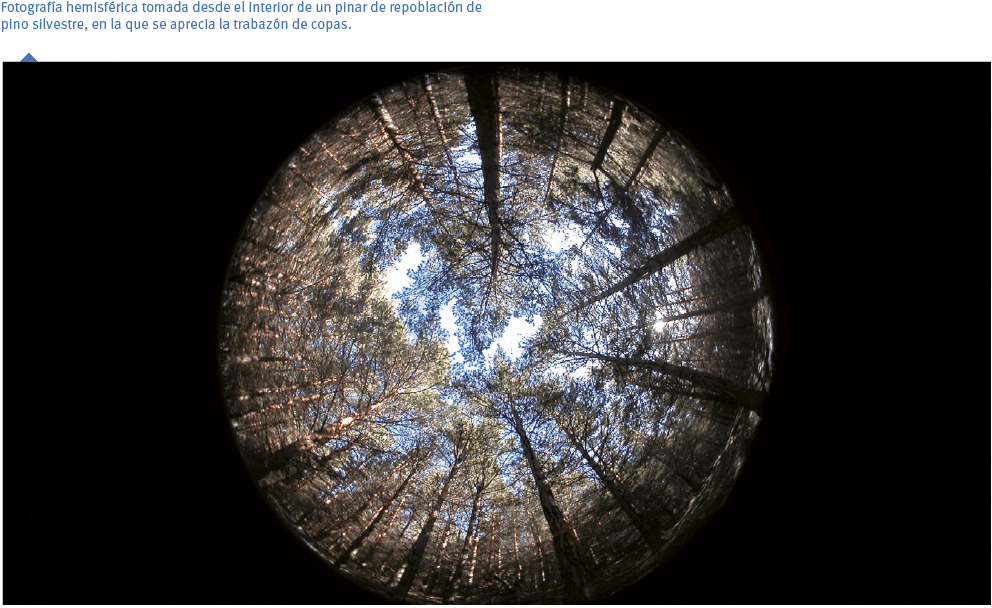
Aims
The objective is to evaluate the response of the forest pines to actions taken to foment floristic as well as structural diversity of the ecosystem, its resilience, and its capacity to provide environmental services.
More concretely, we seek to evaluate the incidence of:
- The intensity of the treatments applied for growth and regeneration of the main species, recruitment of other species, and the increase in floristic diversity, the increase in spatial diversity (vertical structure), survival after the treatments, and possible effects on the control of diseases.
- The effect of elevation, exposure, and the main species for the same treatment in relation to the above-mentioned variables.
- The type of machinery used to eliminate the wastes produced in the regeneration of tree species, the recruitment of other species, and the growth/survival of the accompanying undergrowth.

Method and effort
The methodology consists of laying out permanent plots for monitoring, where several experimental treatments are applied. Different treatment zones are selected based on exposure, elevation, soil type, and main species of the formation. Each area has three replicates per treatment, classified according to intensity of the clearing: 0% (control), 30, 50, and 70%.
The main parameters studied are: height, spread of the crown of the tree, growth of the last few years (before and after treatment), and regeneration of the main species and of other accompanying tree species, coverage-abundance index, and height of woody and shrubland species with importance in ecological succession, leaf-area index (LAI), Nº of dead individuals, felled or fallen, possible disappearances or alterations in the shrubland after the actions taken, and possible affects of pests. In addition, the forest plots studied are compared with their appearance in the orthophoto from the year 1956.

Periodicity
The dasometry and epidometry of tree species are studied immediately after the forest actions taken and are repeated every 3-5 years, depending on the results found.
The growth and regeneration of woody species within the framework of ecological success are studied immediately after the action taken, repeating the study one year later and thereafter every 1-3 years, depending on the results found.
References
Carreras, C. 2006. Diversificación estructural de masas forestales artificiales. Resultados de ensayos en Andalucía Oriental. Invest. Agrar.: Sist. Recur. For. (Fuera de serie): 103-110.
Guarriguata, M. R. 2009. El manejo forestal en el contexto de la adaptación al cambio climático. Revista de estudios sociales, 32: 98-113.
Noss, R. F. 1999. Assessing and monitoring forest biodiversity: A suggested framework and indicators. Forest Ecol. Manag., 115: 135-146.